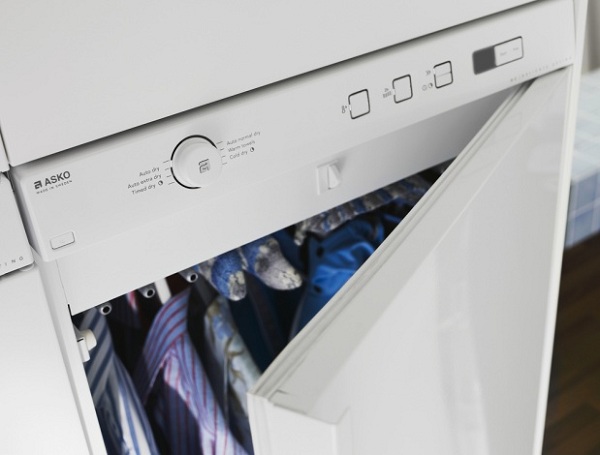The principle of operation of the drying machine
Among the many devices created to facilitate our lives, there are also tumble dryers. Someone has already appreciated their advantages and convenience, and some still can not understand what to occupy the useful space in the house with a bulky unit. In order for you to get the right opinion, you need to find out how a modern clothes dryer works. Having clarified the nuances, you will be able to objectively evaluate all the beneficial aspects of the device and understand the negative aspects associated with its use.
Content
Types of dryers and the subtleties of their work
So, in order to determine whether the device will be useful for you, you need to understand how it works. I must say that the principle of operation of the dryer is quite simple: this unit simply accelerates the natural drying process with the help of hot air. Among the modern units can be distinguished 2 main types that differ in their device.
Drying cabinet
It is made in the form of a box with shelves on which stacks of washed clothes are laid out. After activation, the interior of the device is filled with dry hot air. As a result of such exposure, excess water from the fabric evaporates, turning into steam. After that, steam is expelled from the chamber by the fan. Cold air from the room is taken with the help of a ventilation duct, heated to the desired temperature and refills the chamber. The cost of such a system is not high, in its segment it represents a budget option.
The downside of the car is a massive case, which takes up a lot of space.

Drum machine
The structure of the device is similar to a washing machine - the same loading door, the same control panel. The developers took the principle of drying from the previous model - hot air, but not in a static position. The rotating drum moves the laundry, which significantly speeds up the evaporation process. There are models with blades designed for uniform distribution of linen.They do not allow him to gather in a lump, and allow to dry evenly. The disadvantage of this model can be considered working noiseissued by the device when the drum rotates. The figure below shows a diagram of such a drying device with the designation of the main elements.

Drum device is more practical and convenient in operation, but its cost is much higher than that of the drying cabinet. However, the price does not deter buyers, and the drum model is very popular.
For ease of use, they are installed condensate drain. He passes through the moist air, collecting moisture in a special container. After that, the dryer re-gains air, heats it and sends it to the fabric. After the end of the drying session, the water accumulated in the container is removed.
Varieties of drum dryers
In turn, drum dryers are also divided into two types.
- Ventilation. A device with a similar drying circuit does not need to install a drain device, but in contrast, it must be connected to the hood or displayed in a window. The need for additional installation work during installation and the associated restrictions reduce the popularity of the unit among customers.

- Condensation type. In such devices, hot air fills the drum with the laundry, displacing the wet into a special compartment. Condensate accumulates on the walls of this compartment and flows into the tank. Purified air is heated by heating elements and transferred to the drum. Thus, continuous circulation of air masses and drying of linen is provided. In this system, a mechanism is needed to drain the moisture. The device is much more practical and easier to maintain, and therefore is more popular.

Conclusion
A tumble dryer can do a good job if you need to get dry things almost immediately after washing, or you have to wash a large amount of laundry. In addition, the home dryer works well with thick fabrics, blankets and winter jackets, which are difficult to dry on their own. Now that you know how a laundry dryer works, it will become an indispensable assistant at an unfavorable time of year when it is impossible to take things out on the street because of the weather.

/rating_on.png)











